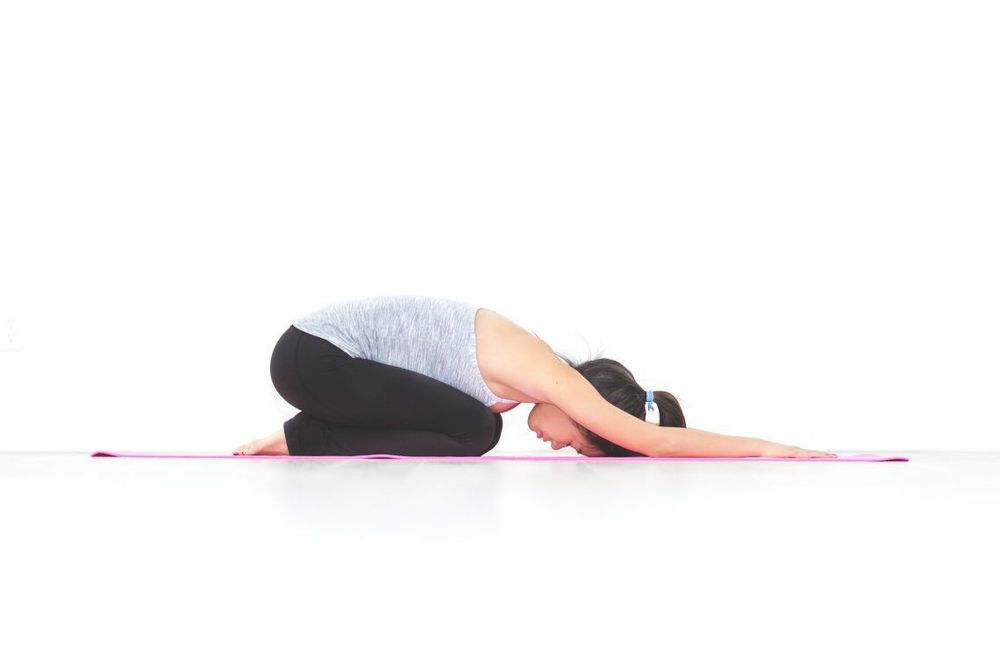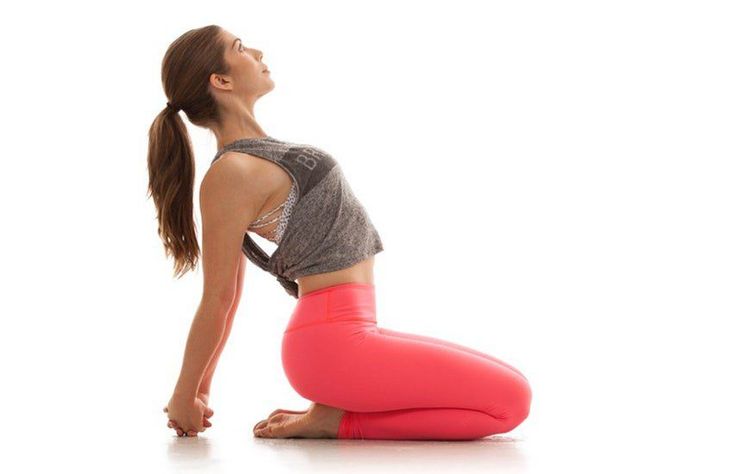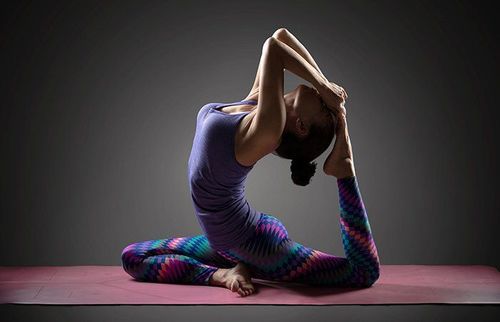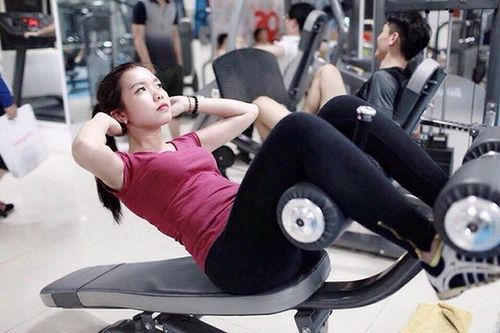This is an automatically translated article.
Poor posture not only affects the structure of the body, but also affects mobility, blood circulation and hormone production. The best way to improve posture is to focus on exercises that strengthen the body's core — specifically the abs and low back muscles that connect to the spine and pelvis.
1. Benefits of Posture Improves Exercise
Poor posture not only affects the structure of the body, but also affects mobility, blood circulation and hormone production. The body associates a closed or sagging posture with stress, which leads to the release of cortisol. On the other hand, stretching or opening your chest can release endorphins and even testosterone, the dominant hormone - avoiding stress and creating a sense of confidence. Exercise to improve posture to have a correct posture will help improve height, physical health and mental health.
Benefits of training to improve posture include:
Correct posture creates a good look. Correct posture helps relieve muscle and ligament strain, leading to less muscle pain, less risk of injury, and more energy throughout the day. Regular exercise helps to develop strength, improves flexibility and balance in the body Postural training helps to explore the range of motion of the shoulder, releasing any tension in the neck and shoulders, Relieve neck and back pain caused by bad posture. Helps lengthen and stretch the spine that is used to sagging after years of poor posture. Stretches that activate the back muscles increase awareness of spine and back position, as well as engage the abdominal muscles relative to the rest of the body. Core strength of the body, including the spine, back and abdominal muscles is important for correcting posture. Stretching and improving mobility in the trunk, especially the thoracic spine, helps to reduce stiffness, relieve muscle tension, and enhance mobility of the thoracic spine. Improving posture also helps to become more aware of the muscles, so it is easier to adjust for correct posture, maybe even notice some imbalances or areas of tension that you didn't before. know well.
2. Movements to improve posture
The best way to improve posture is to focus on exercises that strengthen the core of the body, specifically the abs and low back muscles that connect to the spine and pelvis.
The following are exercises to improve posture.
2.1 Child's pose Child's pose stretches the spine, glutes and hamstrings, thereby releasing tension in the neck and lower back.
How to do it:
Bend your knees and sit on your shins so that your knees are shoulder-width apart, the soles of your feet are facing up, your big toes are touching, and your heels are facing out. Hip bends Keep your arms extended or place them straight on the ground in front of you. Bring your hips down toward your feet. If you can't lower your thighs all the way down, place a pillow or folded blanket under your thighs for support. Gently rest your forehead on the floor or turn your head to the side. Breathe deeply so that the rib cage and waist are drawn towards the spine. Continue to breathe deeply and relax in this position for up to 5 minutes.

Tư thế Child’s pose giúp bạn tập luyện cải thiện tư thế
2.2 Forward fold (standing with legs straight and hips flexed) Standing leg extension and hip flexion helps release tension in the spine, glutes, and hamstrings. When doing this move, the hips and legs will be stretched, so you will feel the entire lower body lengthening and expanding. How to do it:
Stand straight with your big toes touching and heels slightly apart. Place your hands at your sides and bend your body close to your feet. Drop your hand on the floor or rest it on something. Don't worry if your hand doesn't touch the ground - just reach as far as you can. Bend the knees slightly, softening the hip joints and allowing the spine to lengthen. Tuck your chin into your chest and keep your head straight towards the floor. Maintain this pose for up to 1 minute.2.3 Cat cow pose The Cat cow pose stretches and massages the spine, relieves muscle tension in the neck, shoulders, chest, back and abdomen, and promotes blood circulation. .
How to do it:
Place your hands and knees on the floor parallel to each other to create an even balance between the four points. Inhale as you look up, drop your belly toward the ground as you stretch your spine. Exhale and arch your spine toward the ceiling and tuck your chin into your chest. Maintain this position for at least 1 minute. 2.4 Standing cat cow Standing cat cow will help relieve muscle tension in the chest, back, hips and buttocks.
How to do it:
Stand with feet hip-width apart and knees slightly bent. Bring your hands out in front of you or place them on your thighs for balance. Straighten your neck, bring your chin toward your chest, and arch your spine. Then look up, raise your chest, and move your spine in the opposite direction. Hold each pose for 5 breaths each. Repeat this pose for a few minutes. 2.5 Chest opener This chest opening position allows opening and stretching of the ribcage. This is especially helpful in people who spend most of their day sitting, which leads to a tendency for the chest to turn inward. Strengthening your chest also helps you stand up straighter.
How to do it:
Stand with your feet hip-width apart. Bring your arms back and intertwine your fingers, palms pressed together. Grasp the towel if your hands cannot touch each other. Keep your head, neck, and spine in a straight line as you look straight ahead. Inhale as you lift your chest up and bring your hands toward the floor. Breathe deeply and hold this pose for 5 breaths. Release your arms and relax for a few breaths. Repeat at least 10 times.

Bạn có thể tập luyện cải thiện tư thế bằng tư thế Chest opener
How to do it:
Two hands and two feet on the floor. Lift your heels, raise your hips, and straighten your legs. Keep your back straight and contract your abs, arms, and legs. Stretch the nape of your neck, soften your throat, and look down at the floor. Make sure to keep your chest open and your shoulders apart. Hold this pose for up to 1 minute at a time. Do 3 to 5 times. 2.7 Side plank Side plank works the muscles in your hips and glutes to help maintain alignment of your spine and legs, strengthening and correcting these muscles to help support your back and improve posture .
How to do it:
From High plank, bring your left hand slightly in the center. Shift your body weight to your left hand, bring your ankles together and lift your hips up. Place your right hand on your right hip or reach your right hand toward the ceiling. The left knee can be placed on the floor for balance support. Incorporate contractions of the abs, lateral trunk, and glutes while maintaining this pose. Adjust the position so that the body is in a straight line from the crown of the head to the heels. Look straight ahead or up towards the hand. Maintain this position for up to 30 seconds. Repeat on the opposite side. 2.8 Downward-facing dog Downward-facing dog is a forward bend that can be used as a resting position to keep the body balanced. This pose helps relieve back pain and strengthens and corrects your back muscles. Regular exercise will help improve posture.
How to do it:
Lie on your stomach on the floor, place weight on your hands while curling your toes down and lifting your heels up. Lift your knees and hips to bring your pelvis up toward the ceiling. Bend your knees slightly and lengthen your spine. Keep your ears in line with your biceps or tuck your chin into your chest. Press firmly into the hands and keep the heels slightly raised. Maintain this position for up to 1 minute. 2.9 Pigeon Pose (Pigeon Pose) Pigeon Pose is a hip opener that relaxes the spine, hamstrings, and glutes. This pose also helps stretch the sciatic nerve and quadriceps. Opening and stretching positions makes it easier for the body to correct imbalances in the posture. How to do it:
Put your knees on the floor and your hands slightly in front of your shoulders. Bend your right knee and place it behind your right wrist with your right foot out to the left. Place your right leg comfortably on the floor. Slide your left leg back, straighten your knee, and place your thigh on the floor. Make sure that your left leg is straight back (and not to the side). Slowly lower your torso to rest on your right thigh with arms extended in front of you. Maintain this position for up to 1 minute. Slowly release the pose by bringing your hands toward your hips and lifting your torso. Repeat on the left side.

Tập luyện cải thiện tư thế với bài tập tư thế Pigeon
2.10 Thoracic spine rotation The thoracic spine rotation relieves muscle tension and reduces back pain while increasing stability and mobility.
How to do it:
Lie on your left side, bend your hips, thighs and knees so that your torso, thighs, and shins form a 900 angle. Place your left hand under your head with your elbow extended to the left. Place right hand over left hand. Exhale at the same time as you move your left hand toward the ceiling and stretch the front of your torso. Take a long breath in and out in this position. Return to original position. Repeat this pose 5 to 10 times. Repeat on the opposite side. 2.11 Glute squeezes This exercise strengthens and activates glutes while reducing low back pain. Glute squeezes also improve the function and alignment of the hips with the pelvis, resulting in better posture.
How to do it:
Lie on your back, bend your knees and place your feet hip-width apart. Keep your feet hip-distance apart. Place your arms along your body with your palms facing down. Exhale while bringing your legs close to your hips. Hold this position for 10 seconds and then move your legs away from the kiss. Maintain this movement for 1 minute. Practice this pose a few times per day. 2.12 Isometric rows pose Isometric rows help relieve pain and stiffness caused by sitting in one place for too long. Isometric pulls work the shoulder, arm, and back muscles, building the strength to maintain good posture.
How to do it:
Sit in a chair with a soft backrest. Bend your arms so that your fingers are facing forward and your palms are facing each other. Exhale while bringing your elbows behind the chair and squeezing your shoulder blades together. Breathe deeply and hold this pose for 10 seconds. As you inhale, slowly release back to the starting position. Repeat this pose for 1 minute. Practice this pose several times a day. Exercise helps improve posture and health very effectively. Posture improvement needs to be done properly to ensure the best effect.
Follow Vinmec International General Hospital website to get more health, nutrition and beauty information to protect the health of yourself and your loved ones in your family.
Please dial HOTLINE for more information or register for an appointment HERE. Download MyVinmec app to make appointments faster and to manage your bookings easily.
Reference sources: healthline.com, webmd.com,












